My first day in Warsaw passed by uneventfully. I decided to err on the side comfort and spend my first hours acclimatising to the new, more Western space. And there were no events that day anyway. I was there to discover the essence of polishness, that latent thing that, in such an international cultural space as the contemporary art scene, gives art from Poland its uniqueness, but also polishness as identity, and how it is constructed and assumed. Not that you can hope to fathom such depths and complexities in a two week residency. My knowledge is obviously incomplete. I will be subjective and will (not deliberately, for the most part) leave things out. Much of the knowledge I acquired was anecdotal and based on one-time encounters. I don’t think a pole engaged in the local art scene would find any new information in this text and might even express vexation with the way in which I handle my topics. But on the other hand, such a text is useful for rethinking the way in which a local/national scene presents itself to a foreign eye, and therein lies your new knowledge!
And anecdotal evidence is was how my trip started. Together with Szum editors Karolina and Piotr, in the shadow of the towering Palace of Culture, I was slowly introduced into the context. I was told about how just a few days before, a play titled Klątwa (The Curse, directed by Oliver Frljić) drew a mob of rioting right-wingers, outraged at the way in which the play tackled religion, more precisely child abuse within the catholic church and how the authorities responded to it, but also other pressing contemporary topics, in front of the Teatr Powszechny (for which the media can’t be considered wholly innocent), complete with flares, acid, antiprotests, and clashes with the police. We drew humorous comparisons between the Romanian People’s Salvation Cathedral and the Polish Temple of Divine Providence, which acts as a more complex building, also housing a “Pantheon of Great Poles” (connections to nationalism are to be expected) and a Museum of John Paul II and Primate Wyszyński, for which state funds for culture were employed. We also commented on the architectural playfulness of contemporary catholic churches (see Sanktuarium NMP Gwiazdy Nowej Ewangelizacji i św. Jana Pawła II). Of the aggressive policy of urban developers, demolishing modernist buildings and erecting skyscrapers (Warsaw’s Museum of Modern Art recently lost one of its pavilions), joking that if they couldn’t demolish the palace of culture itself, they can at least cover it up with skyscrapers. About architectural similarities between it and Casa Scânteii and about differences – the former borrowing elements from national architecture, especially the parapets, which reference the style of the National Renaissance, especially visible in Krakow. Giddily taking all of that in, I returned home.
I stayed near Plac Zbawiciela (nicknamed Plac Hipstera), where, in 2012, artist Julita Wójcik had installed a rainbow (Tęcza in Polish) made from artificial flowers. Because of its perceived associations with LGBT culture (placed right in front of a church nonetheless! Conservatives and spokespeople of the Church made no secret of their antipathy towards the work), the rainbow went through a few cycles of being burned down and then reconstructed, before being finally dismantled in 2015. Part of its structure made it into the much-talked-about Late Polishness exhibition, at the Ujazdowski Castle Centre for Contemporary Art, curated by Stach Szabłowski and Ewa Gorządek, transfigured as the understructure of a round table, in a separate room, where a number of discussions relating to national identity were held. The room also contained photo documentation of the rainbow’s life in the square, and a loop of Mister D.’s (musical pseudonym of writer Doroty Masłowskiej) commentary song. I the visitor, at first, did not pay much mind to this structure; however, in Poland, a round table is never just a round table. It represents the moment of reconciliation that came after almost ten years of social unrest, in 1989, when the government and the Solidarity union (Solidarność) came together for discussions, leading to a landmark agreement (also dubbed “The Roundtable Agreement”) that brought important changes to the country’s power structure, paving the way for transition. This is perhaps why post-communism is not such a relevant theme in Polish contemporary art, as is the case with Romania, where the transition was violent (but also less revolutionary than some hoped) and where this penchant for the communist past and for transition could be called, borrowing from Roger Luckhurst, traumaphilic. Perhaps the Polish equivalent would be historiophilia.
Historiofilia was an exhibition curated by Piotr Bernatowicz at Stara Drukarnia Naukowo-Techniczna (and supposedly attended by the minister of culture himself, and we’ll see why that is worth noting). It also contains a round table, only here the table is a giant saw blade (by Jerzy Kalina). The dissatisfaction with the political turn that the country underwent after ’89, with the presidency of Lech Wałęsa, with Poland’s presence in the European Union are all voiced in the exhibition, with the Smolensk plane crash being just the most recent reason for enragement, tying in neatly to an anti-Russian narrative (the hypothesis that the crash was in fact a Russian plan is, apparently, held by a number of conservative politicians), in which Donald Tusk is also a target. The atmosphere in the far-end room of the gallery is somber, even dramatic: what the viewer knows represents the plane wreckage is covered by a prelate in the national colors (like a dead body?), with large oval glass shapes (which, I can only imagine, represent tears) scattered around, while a few gloomy paintings in dark tones of the wreckage adorn the walls. The topic is present in Late Polishness as well, notably through a famous work by Jacek Adamas called Artforum (2011), which is an actual copy of the February 2011 issue of Artforum, which has on the cover a photo of an action by Paweł Althamer, where he and a group of people (mostly neighbors), dressed in golden full body suits pose next to a Boeing 737, also golden, from which they have just emerged in Brussels, (part of the Wspólna sprawa (Common Task) project), celebrating 20 years since communism was abandoned in Central and Eastern Europe. The difference is that on the back the artist placed an image with the wreckage at Smolensk, as a deflation of Althamer’s optimism. Jacek Adamas is present in Historiofilia as well, notably with his message-covered van that he drove for a number of happenings, as well as his infamous sign saying “women burn better”, quoting an Auschwitz Sonderkommando, which is to be understood as a response to Doroty Nieznalskiej’s documentation project of the Hindenburg Mausoleum (the Tannenberg Memorial, a monument to German national feeling) in Olsztynek, opposing this historical rediscovering of German past on Polish territory.
The exhibition is a strikingly coherent, media-literate example of critical art praxis, in the sense that it stems, as it should, from a dissatisfaction with the status quo, from a marginal, unpopular position against the powers that be, only it happens that the standpoint is aggressively conservative, and the powers that be are not as much those ruling the country as those acting upon it from outside, through policies and agreements and discourse. The phenomenon, I’m told, is relatively recent in Polish art (whether or not it’s correlated with the burgeoning of the extreme right is too complex a question for me). One could cite Bernatowicz’s 2015 exhibition Strategie buntu (Strategies of Rebellion) at Arsenał in Poznań (a coverage in Polish by Szum available here), which featured a few of the works exhibited in Warsaw, and whose statement and title ideologically place the exhibition as outside of the mainstream (here it would be worth mentioning Bernatowicz’s adherence to the theory of a leftist art mafia making selections on what can and cannot be shown on ideological bases, following art critic Monika Małkowska, who has supported the theory since the early 2000s), by referring to itself as rebellious, as an unruly persecuted minority, opposed on a discursive level to “political correctness”, clichés that, they state, undermine the free speech of the differently opinionated (Bernatowicz is also known for signing an open letter stating that intellectuals disagreeing with “gender theory” are discriminated against). This position of oppressed category is itself questionable when we take into consideration the configuration of the current executive and legislative branches and their actions. While in Romania such a discourse is often tossed around in essayistic pieces by public intellectuals or on social media (e.g. critic Pavel Șușară), this has not seen a translation into art. We can at most consider Romanian “conservative art” as deliberately apolitical works in traditional media, typically alienated from the artistic mainstream anyway, or simply not considered from a political standpoint, if it’s a more established artist, and the political right, whether in its moderate or extreme guise, seems illiterate when it comes to contemporary art praxis. Not the same can be said of Bernatowicz’s exhibitions, but the artists grouped around him, a lot of whom are actually quite old and established, are certainly not the only examples. What this does show is that the language of critical art is potentially universal, and that the right should not be thought of, by default, as unable to employ it.
Late Polishness is also a statement to this fact, but its methodology is different, trying (and, I believe, managing, by including many fascinating initiative from the other side of the political spectrum) to give an ideologically balanced account, grouping together very disparate works removed from their contexts, rendered benign and examinable, including many more conservative-oriented pieces, Radek Szlaga’s turning “Solidarność” into “Kolonie”, Krzysztof Bednarski’s Marx NLC, Grzegorz Klaman’s This is the Head of the Traitor – 2016 (the head being Wałęsa’s), but it is Historiofilia that showed me that this discourse is alive, interacting and militating independently.
An abundance of discourse is I think healthy for any culture-producing community, as each side is forced to reconsider its own values. However, arguably, a leftist-dominated art scene responds to political conditions, and doesn’t require a right-wing equivalent to reassess its values. This socially engaged art is, besides a means of community-building (the right-wing guise of which Rancière probably did not have in mind), which is always welcome, an embodiment of certain political values that seek a translation into policy, and so they should be at least partly evaluated according to those (granted, Historiofilia doesn’t really instigate to violence or to the limiting of rights, despite virulently condemning alternatively Russia, Germany, and the European Union. Some works even have documentary purposes, like Jacek Lilpop’s installation Generał Nil, which acts as a sort of memento, complete with historical documents, of how Deputy Commander-in-Chief of the Home Army during the Warsaw Uprising Emil August Fieldorf “Nil” was unrightfully executed in the early years of the communist regime or the almost ethnographical work of Zenona Olejniczak). Having a sort of critical art coming from the right wing may, on the other hand, act as an impetus towards new and more effective community and resistance initiatives from the other side, which the increasingly restrictive local political climate seems to urgently demand. While I don’t think the Romanian scene is in danger of finding itself in such a position, our local politics demand such strategies. After seeing the exhibition, I naturally started looking around for such discourse from the left. While most of the young artists I spoke to were reluctant to voice their beliefs through the same means, there was a show at lokal_30 that broached the topic of “art’s utility” (in light of the recent budget cuts to cultural institutions, it seems that those in power already have an opinion on that), how it engages with the social. To quote the curatorial text: “In 2007, in his essay The Applied Social Arts, Artur Żmijewski argued for the necessity of art’s departure beyond its autonomy. Today, ten years after the publication of that text, it seems that we have not moved far ahead”. Truly, social engagement and unruliness in the art world is traditionally associated with the left, yet while this is perceived as stagnating, it is the conservative side that becomes provocative, as we saw in Historiofilia. This show balanced all of this out for me. Entering the space, I had the surprise of bumping into some Romanian text, in the form of a series of questions on a canvas addressed to president Klaus Iohannis by an expat collective who release a quarterly publication called Mamałyga Warszawska/Mămăligă de Varșovia (Warsaw Polenta) (a text on them coming soon), which, sadly, never reached its destination. Alicja Wysocka’s Alfa Omegi project engages with local (female) communities in the slums of Nairobi, Kenya, producing handmade bags, shoes, and clothing, all available for purchase in the exhibition, with proceeds going back to the struggling communities. Then there is a documentation of Justyna Górowska and Adam Gruba’s Sesama, a community center in Yogyakarta, inviting Polish to come and partake in more or less social projects with the native community. These projects of course have a more international scope. In a more local context, Karolina Breguła shows footage of a TV series, which engaged with the microcosms of blocks of flats, improving social relations between dwellers, while Jan Sajdak rag sculpture wishes to highlight the plight of poorly paid workers. I also found out about the Żubrzyce group, who, as method and politics, operate similarly to the Guerilla Girls, but with bison masks instead, practicing institutional critique, protesting with a clear “nie” against pressing issues like gender inequality and deforestation.
As a sort of counter, Historiofilia presents a documentation of the protest-happenings of the Naszość group. Self-described as counter-revolutionaries, they have a diverse body of actions, including: demonstrations against the second Chechen war, a restaging of the storming of the Winter Palace, with portraits of Lenin and Stalin, against the SLD party (the Democratic Left Alliance, which they accuse of descending straight from the old communist party, which pretty much disqualifies as a viable leftist alternative, a situation with which we can certainly identify), and a counter-demonstration to the Equality March in 2005, which they dubbed the Parade of the Masturbators, complete with an absurd list of demands. This is again the kind of creativity I wouldn’t expect to see in a Romanian conservative action. I think some aspects of their take on protesting (not all of them) would be unintelligible here. While one shouldn’t underestimate the opposition, the exhibitions I have discussed so far only speak about the context of Poland, and are therefore addressed to locals. Symbolic here is the neon by sign Hubert Czerepok above the doorway leading to the exhibition space of Late Polishness, which reads “You will never be a pole” (referencing a message addressed by football fans to a footballer who had received Polish citizenship, and overlapping it with the symbols of the kotwica and the Celtic cross, as a critique of their appropriation by said community. Could we see this as part of a wider phenomenon of symbolic appropriation from the right?) in Polish, naturally, thereby setting a clear barrier between the foreign visitor, armed with the lengthy English-language guide, and the native, who already recognizes most of the works (too well, even), as they are quite famous, and is able to position himself critically within the vast space. While the media employed tend to point to a highly Westernized scene, Poland does a great job making use of its local context.
Wondering how it will symbolically tie in to everything I’d seen and hearing that it was a more foreigner-friendly exhibition, I went to see “that show about mermaids” (The Beguiling Siren is Thy Crest, a large curatorial initiative at the Museum of Modern Art), aiming to explore the symbol of the mermaid/siren (the reader is invited to scrap the distinction between the two words that exists in English, but not in Polish or Romanian), which is part of Warsaw’s coat of arms, and which has come to represent the city, in a global context. Polishness is to be found there as well, but this time aiming outward, by virtue of its being comprised of works from various spaces and times, and making local connections clear. But what it gains in communicability it loses in relevance. By placing a series of manuscripts and printed books attesting the use of the mermaid in the coat of arms of the city, the following of a narrative is suggested, but it is quickly interrupted, and what we are given is brief. Locally, the symbol has been used by football hooligans and feminist groups alike. Coupled with the numerous works depicting mermaids (most of the time), removed from their historical or personal narratives, the mermaid becomes something of a universal symbol referring to nothing in particular anymore, and, in fact, gathering around itself images that do not even reference the siren/mermaid (woman – fish/bird hybrids) at all, like general human – animal hybrids, human – nature mergings (Korakrit Arunanondchai), and objects without symbolism (like Edith Dekyndt’s A Portrait of Things, a belt of fabric half-submerged in water), as if the actual image of the mermaid becomes limiting, insufficient to express a more general idea. Perhaps the promise of communication, of transcending boundaries of nationality, ideology, race, or gender (August Agbola O’Browne, the only black person that participated in the Warsaw Uprising, represented as a mermaid in a mural by Karol Radziszewski, borrowing from the mermaid that Picasso drew in a Warsaw apartment in 1948, or Elmgreen & Dragset’s merman Him), or a statement concerning some inexpressible aspect of femininity. In any case, the idea of mermaid-ness becomes more elusive than that of polishness itself. Yet this exhibition is more optimistic, showing that symbols can be appropriated for one’s own ends, which partly explains the eccentricities of the artistic right, while also arming the visitor with the knowledge needed to oppose it.
Another alternative, in the guise of a more moderate conservative position, to Bernatowicz’s polarizing, militant discourse was offered to me by Ada Karczmarczyk, who has once collaborated with him in the past. After a brief period as part of a feminist performance duo, Ada went through and emerged out of a crisis in her life with the help of God. Her work also saw a transfiguration, by tackling religious themes, blending catholic symbols with post-internet gloss and kitsch aesthetics, sparking accusations of parody by non-religious viewers and of blasphemy by believers, yet Ada assures everyone that she merely wants to evangelize the world, and update Polish Catholicism’s iconography lifestyle for the 21st century, for a younger, media-literate audience. Ada tells me that there are people who manage to understand her art, from educated young people to priests, though it remains highly singular. As a parenthesis, what struck me in Historiofilia was the absence of commentary on religion or from a religious standpoint (Late Polishness featured plenty of John Paul IIs), as Polish right-wing identity is tied to the Church (generally speaking, as there have been attempts of drawing the essence of polishness from pre-Christianization paganism, most notably in the pre and interwar works of Stanisław Szukalski, which take inspiration from its iconography, as well as from Mesoamerican religious art, among other sources, open Late Polishness, highlighting the complexity of the topic). Ada has worked with the idea of national identity herself, and her version of “conservatism” is the desire to protect local initiatives, so that polishness can flourish in culture and coexist and interact with other national identities, that can learn from each other without losing themselves (though the transnationalism of contemporary art as well as vast amounts of its theory would point in an opposite direction).
In the end, that is not to say that one has to get explicitly militant in one’s art in order to resist a virulent ideology. Art, after all, has multiple social functions. In part 2 we will see how the young generation of Warsaw engages with the social and semiotic realities around them, and we will also take a look at the scenes in Katowice and Krakow, based on my (too) brief visit there, and the kinds of social bonds that tie everything together.
Rareș’s residency in Poland was made possible thanks to the generous support of AFCN and ICR Warsaw.
POSTED BY
Rareș Grozea
Rareș Grozea (born 1995) got his B.A. in Art History from the University of Bucharest and is currently studying for a Master's in Berlin....
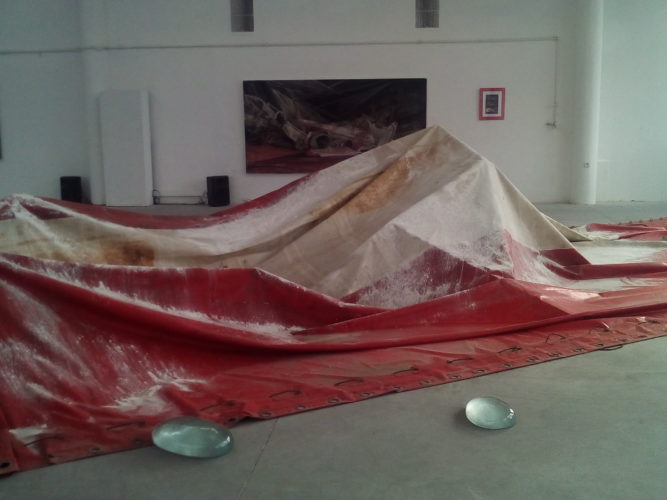
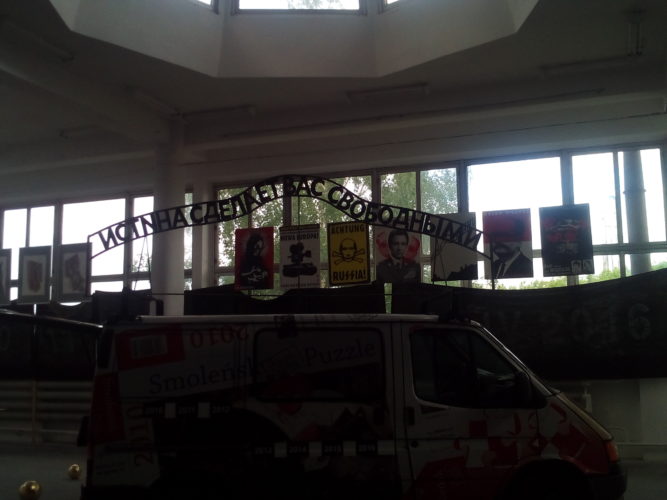
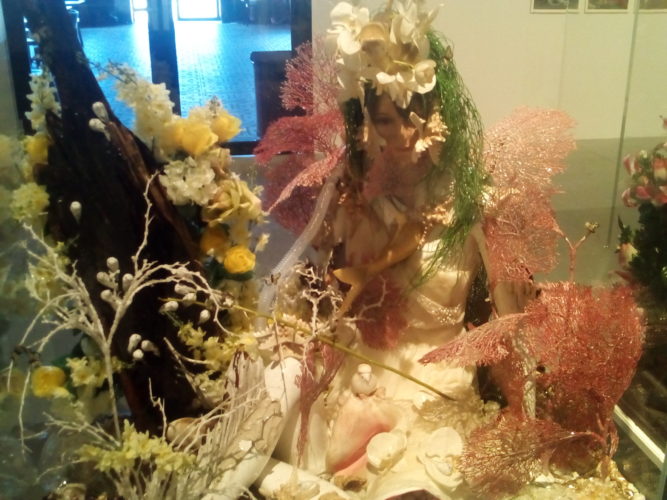
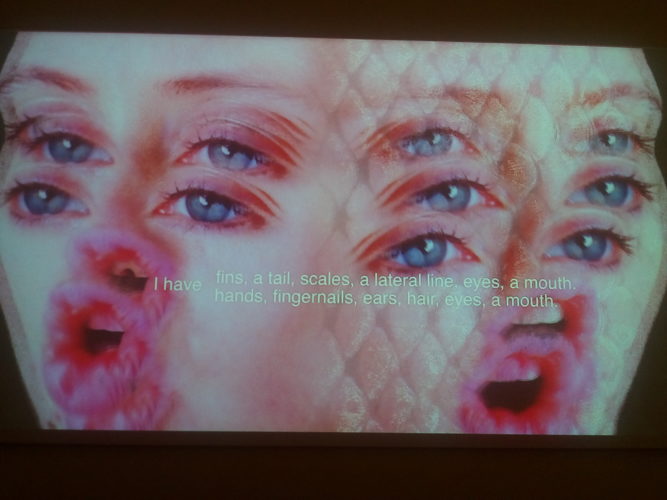
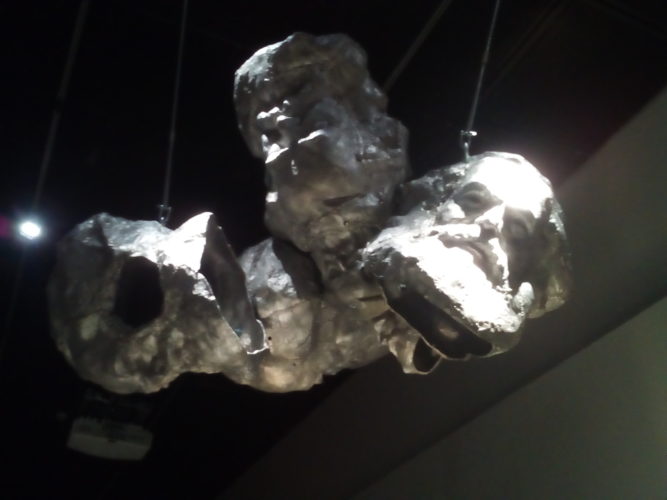
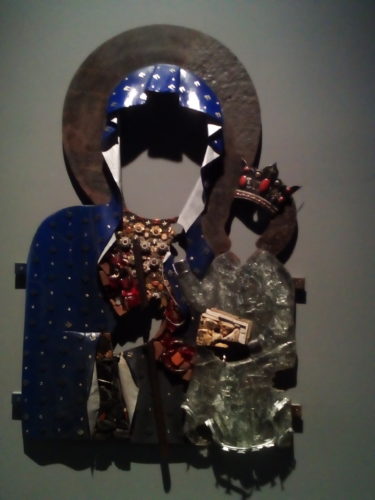
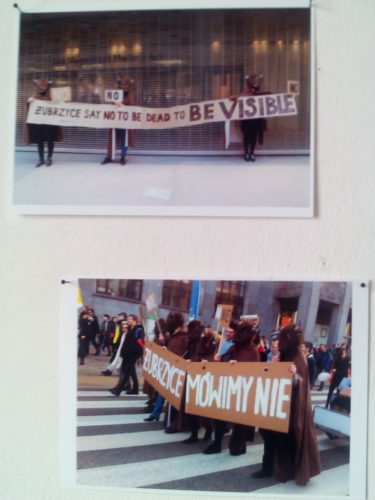
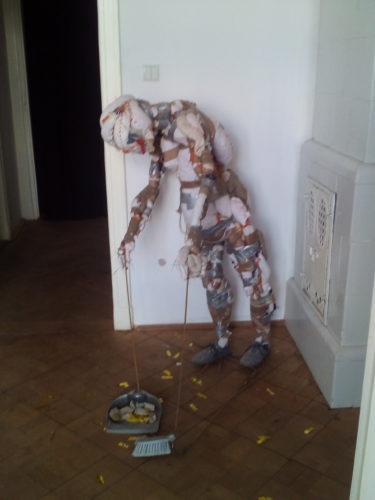

Comments are closed here.